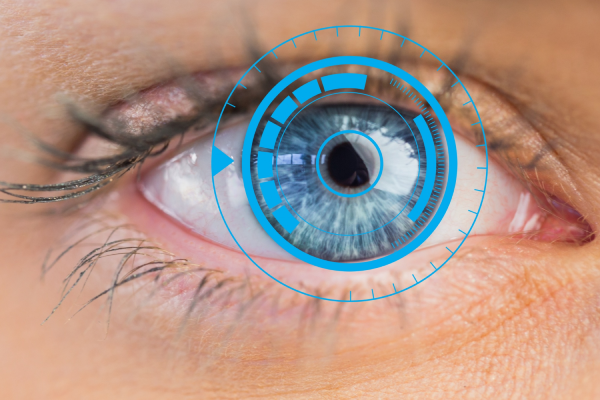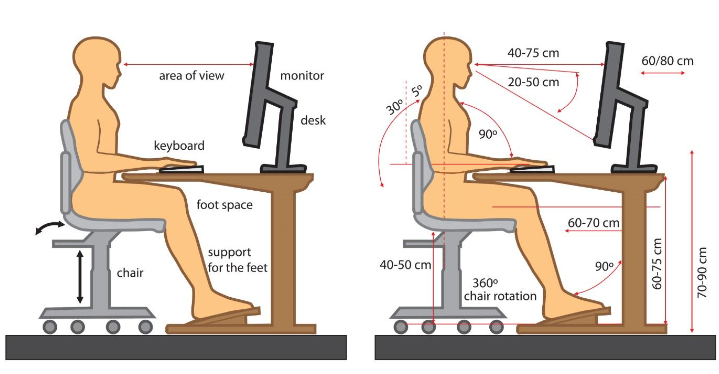






Computer Vision Syndrome: Understanding and Prevention
In the fast-paced digital age we live in today, it is increasingly common for us to spend extended periods of time staring at screens. Whether it be for work, school, or leisure activities, our eyes are constantly exposed to the glaring lights emitted by our electronic devices. This excess screen time has given rise to a condition known as Computer Vision Syndrome (CVS), also known as digital eye strain. In this blog post, we will delve into what CVS is, its causes, symptoms, and most importantly, how to prevent it.
CVS is a combination of various eye and vision-related problems that occur as a result of prolonged screen use. The condition can affect anyone, regardless of age or occupation, but is particularly prevalent among individuals who spend several hours each day working on computers or using other digital devices. The most common symptoms of CVS include eye strain, headaches, blurred vision, dry eyes, neck and shoulder pain, and even difficulty focusing.
Now that we understand the symptoms of CVS, let's take a closer look at its causes. Primarily, CVS is caused by the prolonged and uninterrupted focus on digital screens. Unlike printed materials, electronic displays have a unique visual contrast that forces our eyes to continuously adjust in order to maintain clear focus. This constant focus adjustment strains the eye muscles, leading to discomfort and fatigue. Additionally, the blue light emitted by screens can be harmful to our eyes, as it can disrupt our sleep patterns and damage the retina.
Fortunately, there are several simple and effective measures we can take to prevent or minimize CVS. First and foremost, it is important to practice the 20-20-20 rule. This rule recommends that for every 20 minutes spent looking at a screen, we should take a 20-second break and focus on something 20 feet away. This allows our eyes to relax and readjust their focus, reducing strain. Additionally, it is crucial to ensure that our workstations are set up ergonomically. Adjusting the screen height, reducing glare with proper lighting, and positioning the screen about an arm’s length away from our eyes can make a significant difference.
Another easy way to combat CVS is to ensure proper eye care. This includes regularly visiting an optometrist to get your eyes checked and receiving any necessary vision correction. Additionally, using artificial tears or lubricating eye drops can help keep the eyes moist and prevent dryness. Lastly, it is important to limit screen time whenever possible. Taking breaks, engaging in outdoor activities, and adopting healthier hobbies that don’t involve screens can not only reduce the risk of CVS but also promote overall well-being.
Computer Vision Syndrome is a condition that affects millions of people worldwide, highlighting the importance of understanding its causes, symptoms, and prevention methods. By implementing these simple strategies into our daily routines, we can protect our eyesight and ensure a healthier and more comfortable digital experience. Prioritizing our eye health is crucial in today’s technology-driven society, so let’s make conscious efforts to prevent CVS and maintain optimal vision for years to come.

Some important factors in preventing or reducing the symptoms of CVS have to do with the computer and how it is used. This includes lighting conditions, chair comfort, location of reference materials, the position of the monitor, and the use of rest breaks.
Location of the computer screen.
Most people find it more comfortable to view a computer when the eyes are looking downward. Optimally, the computer screen should be 15 to 20 degrees below eye level (about 4 or 5 inches) as measured from the center of the screen and 20 to 28 inches from the eyes.
Reference materials.
These materials should be located above the keyboard and below the monitor. If this is not possible, a document holder can be used beside the monitor. The goal is to position the documents, so the head does not need to be repositioned from the document to the screen.
Lighting.
Position the computer screen to avoid glare, particularly from overhead lighting or windows. Use blinds or drapes on windows and replace the light bulbs in desk lamps with bulbs of lower wattage.
Anti-glare screens.
If there is no way to minimize glare from light sources, consider using a screen glare filter. These filters decrease the amount of light reflected from the screen.
Seating position.
Chairs should be comfortably padded and conform to the body. Chair height should be adjusted so the feet rest flat on the floor. Arms should be adjusted to provide support while typing and wrists shouldn't rest on the keyboard when typing.
Rest breaks.
To prevent eyestrain, try to rest eyes when using the computer for long periods. Resting the eyes for 15 minutes after two hours of continuous computer use. Also, for every 20 minutes of computer viewing, look into the distance for 20 seconds to allow the eyes a chance to refocus.
Blinking.
To minimize the chances of developing dry eye when using a computer, try to blink frequently. Blinking keeps the front surface of the eye moist.
Multiple questionnaires are available to determine the severity of CVS. Some of the questionnaires include:
Dry Eye Questionnaire (DEQ-5)
Questionaire by Hayes and colleagues (has 10 items) [53]
Visual fatigue scale
Computer vision symptom scale (CVSS17)
CVS questionnaire (CVS-Q)[54]